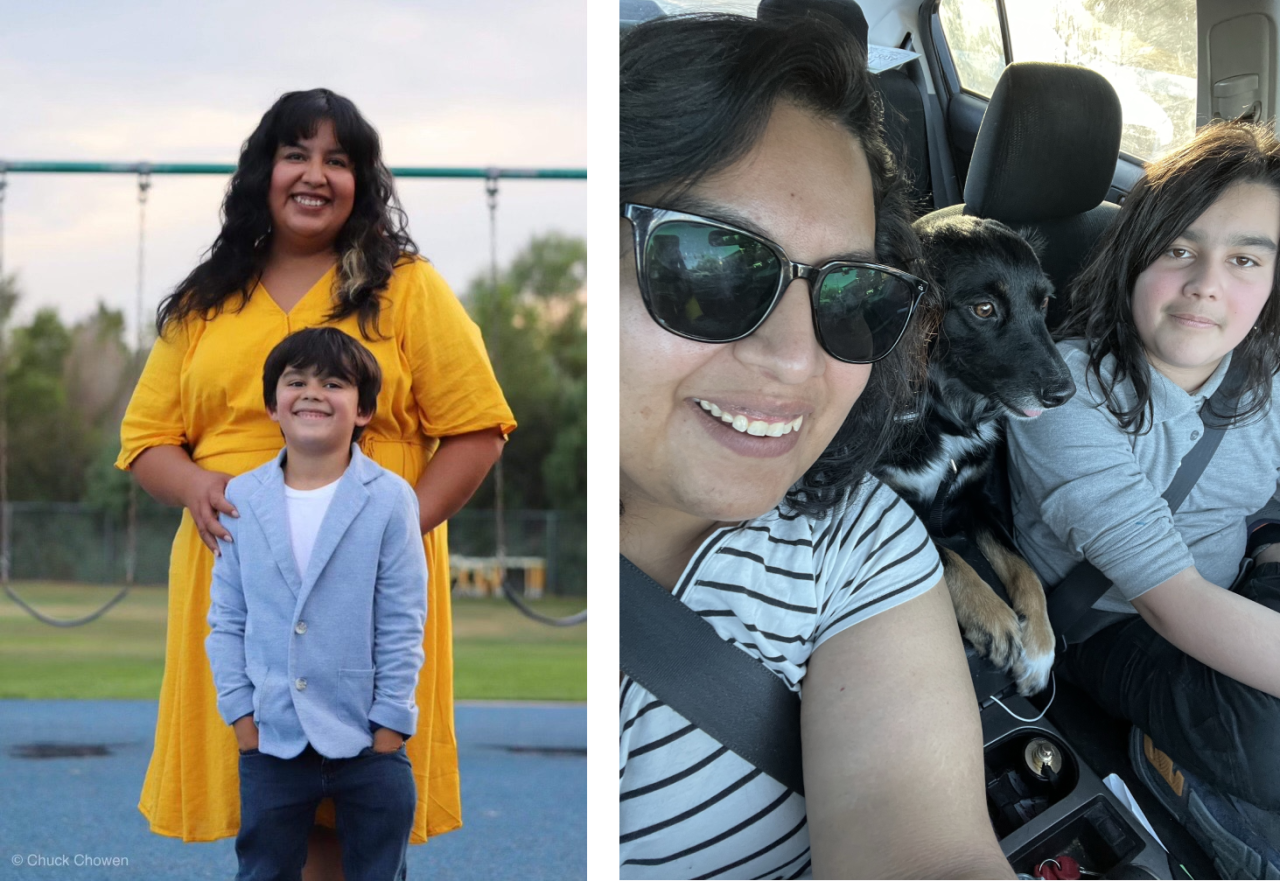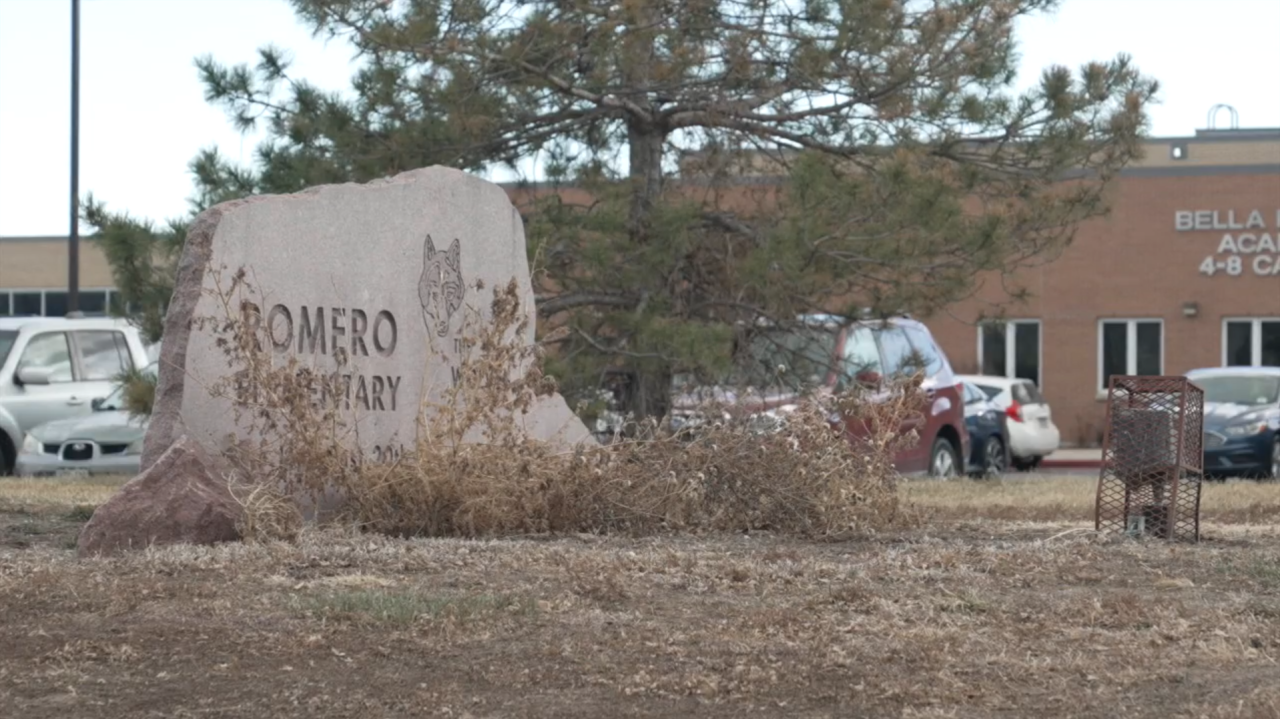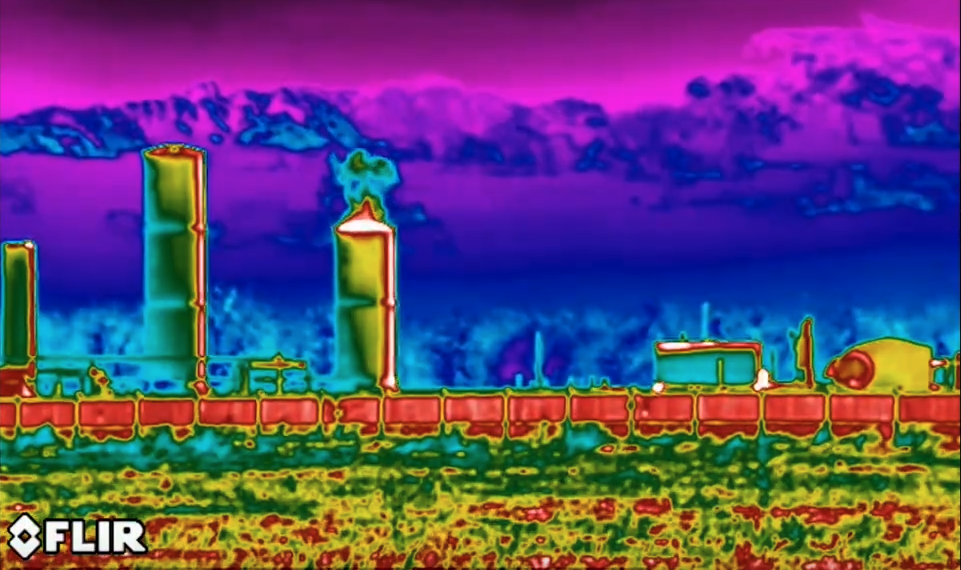GREELEY, Colo — At the Bella Romero Academy 4-8 in northern Colorado, students study and play less than 2,000 feet from oil and gas operations.
“If we go to the playground and we get on the jungle gym, you can see the wells,” said Patricia Garcia-Nelson, whose son Diego has been a student at Bella Romero since 2019.
As students head back to school next week, Garcia-Nelson is raising concerns that the state may not be doing enough to monitor air pollution and its potential health risks.

Colorado’s top health and environmental agency tested the air around the school in late 2019 and determined the air toxics present were at levels too low to harm the health of children. Since then, the Greeley-Evans School District has rejected the need for continuous air monitoring on campus.
Still, parents like Garcia-Nelson haven’t been reassured. In recent months, university researchers and environmental activists have documented emissions leaks and spikes in air toxics. But the researchers and activists said neither the school district nor state officials have taken any recent actions based on those concerns.
"The biggest frustration for me is that the state has set the bar so high for community members to prove harm that it feels like they just continuously keep moving the finish line,” Garcia-Nelson said.

When Garcia-Nelson first learned that an oil and gas operator planned to drill wells close to her son's school, she was shocked.
“My thought was, in Colorado, you can't have a weed store within 1,000 feet of a school, so there's no way this is going to happen,” she said.
But the fracking moved forward, and she joined efforts to fight for stronger protections against oil and gas operations near schools. Garcia-Nelson joined a lawsuit against the state, which unsuccessfully aimed to challenge the nearest well site’s approval.
Over the years, her worries about her son’s potential exposure to toxic air pollution have led her to become a full-time environmental advocate with the group GreenLatinos.
When Colorado’s Department of Public Health and Environment (CDPHE) stopped monitoring the air near Bella Romero, she looked for other options.

Dr. Emily Fischer, an atmospheric scientist and professor at Colorado State University, offered to set up an air monitor as part of a graduate studies course she teaches. She said although the CDPHE study determined the air quality was safe in 2019, levels can change over time.
“Just because you've done air monitoring at one place, at one time, does not mean that you really understand what's happening there today,” Dr. Fischer said.
Dr. Fischer and her CSU graduate students wanted to place an air monitoring system on the Bella Romero playground. But the Greeley-Evans School District rejected their offer because it was a short-term university study and they didn't view it as a "prudent source of air monitoring," said Theresa Myers, the school district's chief of communications.
"We, at that time, did not feel that that was an apples-to-apples comparison of what the CDPHE had done in their own monitoring," Myers said.
“After we were denied access to the school, the community was still very interested in having the monitoring, so we we set it up in a neighbor's yard across the street,” Fischer said. They’ve been measuring the air quality there since 2022.
Then in September of last year, they captured what Dr. Fischer called a “plume of concern.”

“The wind direction indicated that that plume had passed over the school,” she said. “Our reaction initially was, ‘we have to figure out where this came from.'"
Through some atmospheric science detective work, the chemical fingerprint of the air toxics, which included cancer-causing benzene, led them to the source.
“We are sure that that plume was associated with oil and gas activity,” she said, based on the “i/n-pentane ratio” they measured. “It's a school and it's an air toxic, so to me, those two things say I should share that information."
So, her class presented their findings to Michael Ogletree, who leads Colorado's efforts to control air pollution.
Ogletree said "when people do flag something for us, we do take immediate action to make sure that what's going on isn't impacting public health.”

Environment
Greeley parent worried over emissions leak at oil site near her son's school
But when it comes to the “plume of concern” measured by the CSU researchers, Ogletree said “they showed us values that were below health guideline values, both [the federal Environmental Protection Agency] and our values as well.”
Colorado's health guideline value is 9 parts per billion (ppb) measured over the course of an hour. The measurements collected by the CSU researchers capture samples over the course of 120 seconds, then average that data to estimate how concentrated the air toxics may have been during an hour-long-period.
That's why Ogletree said that the measurement collected last September, while above the 9ppb, is not a comparable measurement to the state's health guideline value.
Trisha Oeth, who directs the CDPHE’s Environmental Health and Protection program, said those health guideline values "really do take into account often the most sensitive of the public, and that's often children.”
“We know how important it is for the parents around Bella Romero to know that when they're sending their kids to school that it's a safe place for them to be, and we take that really seriously,” Oeth said.
But Dr. Fischer believes CSU’s findings still raise concerns and warrant further monitoring in the area because the air toxics were likely more concentrated when passing over the school.
“Given the atmospheric conditions of that day, it might have been twice as high passing over the playground,” she said.

Denver7 talked to several independent air monitoring groups in Colorado who said that similarly to the CSU researchers, they have provided data to CDPHE but were not clear on how that information was being used, if at all.
Ogletree said that “all air quality data is valuable” because it's impossible for the state to put air monitoring everywhere, given the high costs and technical expertise necessary.
“All the extra datasets give us better insight into what’s going on,” Ogletree said. But for the state to use that information in a regulatory capacity, he said very specific quality assurance standards need to be followed.
Ogletree said the state is currently developing data standards that independent air monitoring groups like the CSU researchers could use.
“That's a key component of how we can have things be actionable,” he said. "We can see spikes and go out and do follow up investigations if we're able to access and aggregate all of that information in near real time.”

Oeth, who also works with the CDPHE, said that the agency is requesting additional resources in the state’s budget to hire more staff who can respond to potential issues identified through independent air monitoring. Allowing the agency to “deploy people really quickly into the field, discern what is going on, address the problem and resolve it,” she said.
CDPHE is also trying to “do a better job of closing the loop,” by “providing information back to community members, residents in the area and those who may have notified us about the problem to begin with,” Oeth said.
CDPHE is also currently developing new health guideline values for air toxics, in response to a 2022 law meant to create more public protections from air contaminants.
Ogletree said the new air toxics program will “give us additional insight into how those are impacting communities, so that we can be as protective as we can.”

But for parents and environmental advocates like Garcia-Nelson, the state’s action on air toxics is moving too slow. In the meantime, she said it’s Latinos who are being disproportionately impacted.
Bella Romero Academy is in Weld County, where almost 90% of Colorado’s oil and gas operations take place. Nearly 30% of residents in the county identify as Latino, which is 10% greater than the state average.
At the school itself, more than 80% of students identify as Hispanic or Latino. The majority of students are also signed up for the free and reduced lunch program because their families have low incomes.
Many of the families speak Spanish as their primary language, and some have mixed immigration statuses, which Garcia-Nelson said makes it challenging for them to navigate potential environmental health issues.
In Weld County, recent health surveys show roughly 1 in 10 people suffer from asthma – slightly above the national average. Lung cancer is a leading cause of death, particularly for Latinos. And the county has among the highest rates of leukemia in the state, according to the National Cancer Institute. However, studies have not necessarily linked those health conditions in Weld County to environmental causes, such as exposure to oil and gas operations.

Fort Collins
A deal struck in Northern Colorado will shut down, clean up polluting oil wells
Nonetheless, Garcia-Nelson points to research by Dr. Lisa McKenzie at the Colorado School of Public Health as an indication that a link may exist. Dr. McKenzie’s studies have found that children who live near oil and gas operations are more likely to suffer from congenital defects, leukemia and asthma.
When CDPHE completed its air monitoring study near Bella Romero in May 2020, the agency recommended that the nearby oil and gas operators “establish an emergency communication plan with the school and nearby residents in the event of an emergency at the wellsite that could expose these individuals to harmful levels of air pollutants.”
Myers, the Greeley-Evans School Districts' chief of communications, said she isn't aware of whether an emergency communication plan exists. The oil and gas site closest to the school has "changed hands" multiple times over the years, she said. Extraction Oil and Gas, which initially drilled the wells, filed for bankruptcy in 2020, and later became a subsidiary of Civitas, one of the largest operators in Colorado. Myers said the school district is in contact with the current operator. "We've had communication when there's been concerns," she said.
In 2020, CDPHE also recommended “that the school district monitor less serious health effects, such as headaches, among schoolchildren, and consult with CDPHE to assess this data.”
Myers said "any time a student goes to the health office with a health complaint at any school that is recorded." The coordinator of the school district's health services team regularly reviews that data to look for trends, but "there has been nothing out of the ordinary at Bella Romero," she said.

Environment
Environment groups file lawsuit against Suncor Energy in Commerce City
As students return to school, Garcia-Nelson said she and other parents are planning canvassing and community action events. She is also collaborating with a local university and the grassroots group Cultivando to create a health survey intended to track potential health symptoms children are experiencing.
Garcia-Nelson also said she will continue watching for potential issues when she drops off her son at school.
Many of the emissions released by oil and gas operations can’t be seen with the naked eye. But Garcia-Nelson has partnered up with Andrew Klooster, a certified optical gas imaging thermographer with Earthworks. He uses a special infrared camera to capture emissions leaks, and he has recorded videos at the well site near the school which show potential problems as recently as June.

“We are reporting failure after failure,” she said, including emissions caused by a faulty part at the well site in March.
Garcia-Nelson said videos like these have led to some inspections and repairs at the site. In March, CDPHE confirmed that “a small emission was detected” during a routine inspection by the operator, Civitas. “This was promptly addressed” the following day, CDPHE said. The state agency sent inspectors to oversee the company’s replacement of the faulty part. The state also sent a mobile air monitoring unit to do a sweep around the school, which "did not identify any harmful analytes above baseline levels.” This means the air monitor did not detect any air toxics above the levels expected in the area.
Still, Garcia-Nelson said “there are so many issues that it's getting harder for the state to keep making excuses as to why we're not continuously monitoring, why we aren't holding polluters accountable.”
She said it makes her want to work harder for her community.
“At this school, they tell us that this is our family, and I've always been taught that you do everything to protect your family,” Garcia-Nelson said.
Denver7 is committed to making a difference in our community by standing up for what's right, listening, lending a helping hand and following through on promises. See that work in action, in the videos above.








